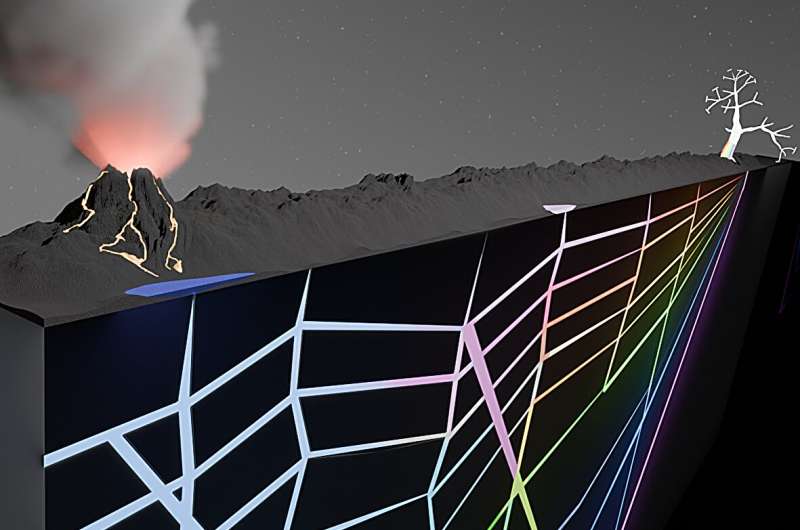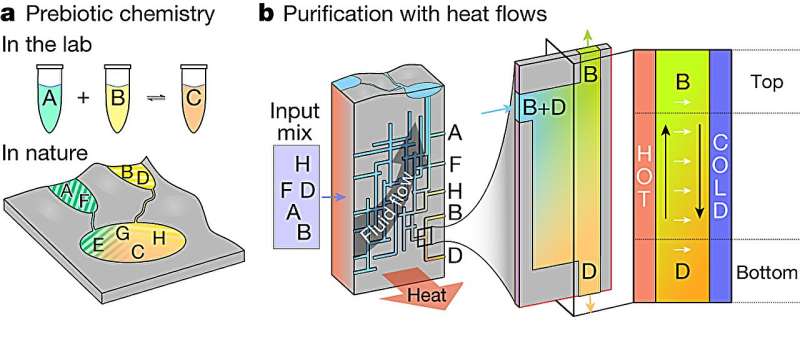April 4, 2024 report
This article has been reviewed according to Science X's editorial process and policies. Editors have highlighted the following attributes while ensuring the content's credibility:
fact-checked
peer-reviewed publication
trusted source
proofread
Lab experiments show material flowing through cracks can isolate molecules that may reveal early life on Earth

A team of biophysicists at Ludwig-Maximilians-Universität München, in Germany, has found via lab experiments that heated material seeping through tiny cracks in hardened material can result in isolation of molecules that could have served as the building blocks for life on Earth.
In their study, published in the journal Nature, the group built a chamber to mimic the conditions inside a volcano and used it to learn how molecular materials might have behaved at the onset of life.
Despite a lot of time and effort, scientists still cannot explain how life came to exist on Earth. Some suggest it got its start organically due to unique factors that existed more than 3.5 billion years ago, while others suggest it may have come from an extraterrestrial source.
For this study, the research team in Germany took a new approach to attempt to prove it was the former—by mimicking the conditions inside ancient volcanos.
Researchers have noted that hot material passing through tiny cracks in rocks can undergo filtering, resulting in the isolation of certain molecules. They wondered if such filtering might have happened on early Earth, allowing molecules necessary for life to be exposed.
To find out, they built a chamber in their lab to mimic a volcano. They used material similar to that found inside modern volcanos to build its structure, complete with tiny cracks similar to those that are found in modern volcanos—they then added heated material to mimic molten rocks and studied the molten material as it seeped down between those cracks and fell onto a collection plate.

The team found that the material had been filtered to the extent that 50 kinds of molecules were isolated—some of which would have been an important part of kickstarting life, like nucleotides and amino acids.
The researchers also found differences in filtering based on different temperatures of the molten rock—even minor differences, they found, could lead to isolation of different molecules. They also noted that changing the size of the cracks made a difference as well.
More information: Thomas Matreux et al, Heat flows enrich prebiotic building blocks and enhance their reactivity, Nature (2024). DOI: 10.1038/s41586-024-07193-7
Journal information: Nature
© 2024 Science X Network





















